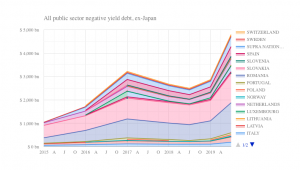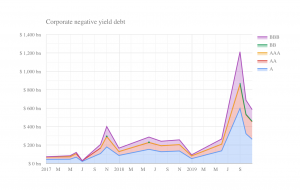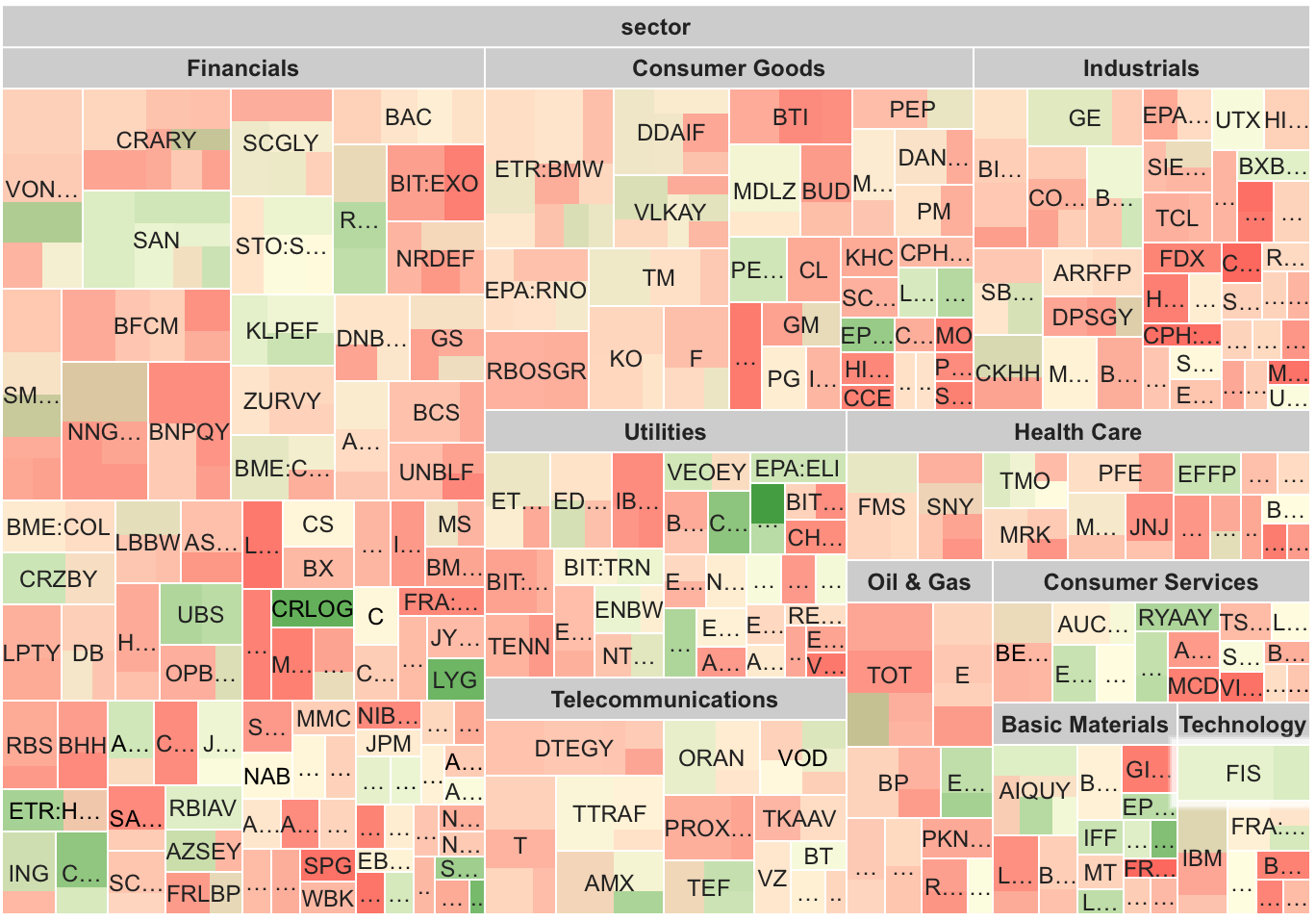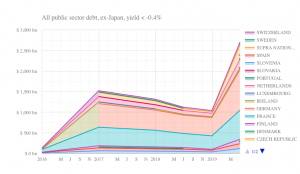Europe’s negative yield explosion

Investing in Europe’s bond markets is costly these days. Like oil, you have to pay a storage fee to buy and own this debt, in the form of a negative yield. And the costs may be about to skyrocket.
The month of June saw euro-denominated negative-yielding government debt surge to a record level of €5 trillion, according to Markit iBoxx data compiled by Risky Finance. That’s up from €3 trillion at the end of December.

The biggest participants in the rally include France and Germany, whose yield curves are now negative out to ten years or more. Strikingly, the negative yield boom included Italy for the first time since the end of 2016, along with other ex-PIIGS, and countries thought of as European emerging markets such as Poland, Romania and Bulgaria.
The plunge in euro-denominated corporate debt yields is equally remarkable. In the space of one month, the amount of negative-yielding corporate debt increased from just under €300 billion to €500 billion. It’s not only Eurozone-based companies targeted by ECB purchases that are affected, but big US issuers like Bank of America or General Electric as well. Even some junk bond yields are now trading below zero.

This all has caused havoc for those who for reasons of choice or necessity, have to hold cash and ultra-safe investments. Derivatives trading has boomed as corporate treasurers use currency swaps to boost returns on their euro-area cash piles. Savers in Germany who rely on bank deposits or life insurance-based savings products have suffered, so much that the International Monetary Fund recently blamed plunging yields for a decline in disposable income.
And traders who bought bonds in June didn’t do so because they were happy with paying a negative yield to maturity. They were gambling that the European Central Bank will soon restart bond buying as the economic climate worsens. In other words, bonds trading at a negative yield today will be bought at an even lower yield by the ECB in the future.
Supporting these thesis is the fact that the ECB already owns a lot: €2.2 trillion of Eurozone government and other public sector debt, and €178 billion of corporate bonds. For German and Dutch bonds, the ECB owns a third of eligible outstanding debt.

Unlike Germany, there is one Eurozone country whose government is keen to borrow more. So why not increase the proportion of Italian bonds the ECB buys? The problem is that altering its sacrosanct ‘capital key’ (which allocates bond buying by national GDP) in favour of weaker countries is politically toxic for the ECB.
In that case, the only way is down: lower deposit rates, and buying bonds at lower and lower negative yields.
We can get a flavour of this ‘new normal’ by filtering euro public sector debt for yields currently below the ECB deposit rate of minus 0.4 per cent. Almost €1 trillion of German bonds are trading below this level. No corporate bonds are currently trading below the deposit rate, which suggest that the ECB will likely focus its firepower here.

There’s a broader debate about what global trade, demographics and digital transformation are doing to the inflation that the ECB is desperately hoping to achieve. Printing money to drive up the price of traditional goods and services can’t overcome the demand-crushing wave of ageing populations and artificial intelligence.
The explosion of Europe’s negative yields may be a sign that policymakers haven’t figured this out yet.